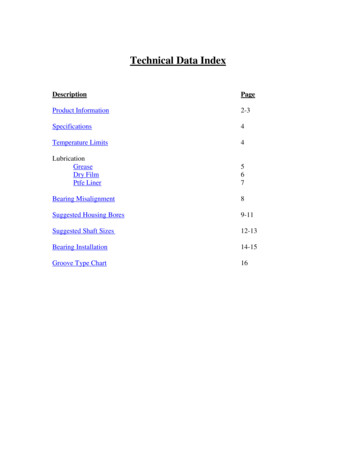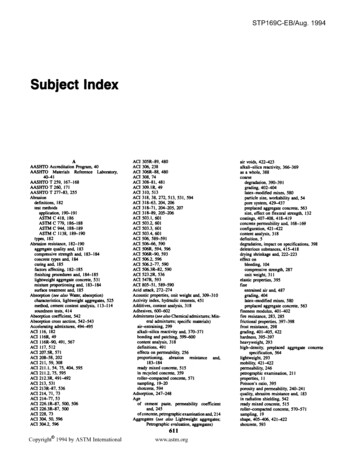![INDEX [thehappinesstrap ]](/img/14/complete-worksheets-2014.jpg)
Transcription
INDEXThe Complete Set of Client Handouts and Worksheets from ACT booksby Russ HarrisACT Made SimpleYour ValuesDissecting the ProblemThe Life CompassThe Problems and Values WorksheetVitality vs Suffering DiaryJoin the DotsAttempted Solutions and their Long Term EffectsGetting HookedExpansion Practice SheetStruggling vs Opening UpSimple Ways to Get PresentInformal Mindfulness PracticeThe Mindful Breathing Practice SheetOvercoming FEAR – 1Overcoming FEAR – 2The Willingness and Action PlanThe Confidence GapClarifying Values and Making Life ChangesA Quick Look at your Values – page 1A Quick Look at your Values – page 2Love, work, play, health values and goalsThe Happiness TrapWorksheets to use with the Happiness TrapHow to get the most of ‘The Happiness Trap’Control of Thoughts and FeelingsThe Costs of Avoidance WorksheetAvoidance & Suffering DiaryDefusion Practice FormExpansion Practice FormInformal Mindfulness ExercisesMindful Breathing Practice FormValues WorksheetValues Assessment Rating FormClarifying your ValuesYour Values (Bullseye)Goal Setting WorksheetOvercoming FEAR – 1Overcoming FEAR – 2The Willingness and Action PlanWhat to do in a 52626272829-303132333435363738-394041424344451
INDEXACT With LoveWhat’s Wrong With My Partner / Our Relationship? And WhatHappens When I Dwell On It?Identify the DRAIN in your RelationshipIf You’re Unwilling to Work at Your RelationshipHow Did You Meet Your Partner?You’re Both HurtingHow I Try To Control My PartnerWho Do I Want to be in This Relationship?Values-Guided ActionsHow To Create Psychological SmogThe Values GapThe Judgmental Mind – part 1The Judgmental Mind – part 2Fighting Tactics You UseAppreciating Your PartnerCreating a Forgiveness RitualScrewing UpYour Relationship – Looking BackwardsYour Relationship – Moving he Reality Slap65Getting Unstuck in ACT70Goal Setting65The Brief Case Conceptualization Worksheet: Notes71Spot the function74A Bit more about ‘Payoffs’75Exercise: Clarify your values77Your Values78How to cope with a difficult dilemma79Ten tips for motivating yourself to practice new skills or pursue important goals 81The ‘Triflex’ Psychological Flexibility Assessment tool832
YOUR VALUES:What really matters to you, deep in your heart? What do you want to do with your time on thisplanet? What sort of person do you want to be? What personal strengths or qualities do you want to develop?1. Work/Education: includes workplace, career, education, skills development, etc.2. Relationships: includes your partner, children, parents, relatives, friends, co-workers, and other social contacts.3. Personal Growth/Health: may include religion, spirituality, creativity, life skills, meditation, yoga, nature;exercise, nutrition, and/or addressing health risk factors like smoking, alcohol, drugs or overeating etc4. Leisure: how you play, relax, stimulate, or enjoy yourself; activities for rest, recreation, fun and creativity.THE BULL’S EYE: make an X in each area of the dart board, to represent where you stand today.I am living fully bymy valuesWork/EducationPersonal growth/HealthI am acting veryinconsistently withmy valuesLeisureRelationshipsAdapted with permission from Tobias Lundgren's Bull's Eye Russ Harris 2009 www.actmadesimple.com reprinted by permission of New Harbinger: www.newharbinger.com3
Dissecting The ProblemThis form is to help gather information about the nature of the main challenge, issue, or problem facing you.First, please summarize, in 1 or 2 sentences, what the main issue or problem is:Second, please describe, in 1 or 2 sentences, how it affects your life, and what it stops you from doing orbeing:Regardless of what your problem is – whether it is a physical illness, a difficult relationship, a work situation,a financial crisis, a performance issue, the loss of a loved one, a severe injury, or a clinical disorder such asdepression - when we dissect the problem, we usually find four major elements that contribute significantly tothe issue. These are represented in the boxes below. Please write as much as you can in each box, about thethoughts, feelings and actions that contribute to or worsen the challenge, problem or issue facing you.Entanglement With ThoughtsLife-draining Actions:What memories, worries, fears, self-criticisms, or other unhelpfulthoughts do you dwell on, or get “caught up” in, related to thisissue? What thoughts do you allow to hold you back or push youaround or bring you down?What are you currently doing that makes your life worsein the long term: keeps you stuck; wastes your time ormoney; drains your energy; restricts your life, impactsnegatively on your health, work or relationships; maintainsor worsens the problems you are dealing with?Struggle With FeelingsAvoiding Challenging Situations:What emotions, feelings, urges, impulses, or sensations (associatedwith this issue) do you fight with, avoid, suppress, try to get rid of,or otherwise struggle with?What situations, activities, people or places are youavoiding or staying away from? What have you quit,withdrawn from, dropped out of? What do you keep“putting off” until later? Russ Harris 2009 www.actmadesimple.comreprinted by permission of New Harbinger: www.newharbinger.com4
The Life CompassIn the main part of each large box, write a few key words about what is important or meaningfulto you in this domain of life: What sort of person do you want to be? What sort of personalstrengths and qualities do you want to cultivate? What you want to stand for? What do you wantto do? How do you ideally want to behave? (If a box seems irrelevant to you, that’s okay: justleave it blank. If you get stuck on a box, then skip it, and come back to it later. And it’s okay if thesame words appear in several or all boxes: this helps you identify core values that cut throughmany domains of life.)Once you’ve done that for all boxes, go through them and in the upper small square inside eachbox, mark on a scale of 0-10 how important these values are to you, at this point in your life: 0 no importance, 10 extremely important. (It’s okay if several squares all have the same score.)Finally, in the lower small square inside each box, mark on a scale of 0-10 how effectively youare living by these values right now. 0 not at all 10 living by them fully (Again, it’s okay ifseveral squares all have the same score.)Finally have a good look at what you’ve written. What does this tell you about: a) What isimportant in your life? b) What you are currently ityHealthWorkCommunity psSocialRelationshipsAdapted with permission by New Harbinger Publications, Inc.from Living Beyond Your Pain, J. Dahl & T. Lundgren, www.newharbinger.com5
The Problems and Values WorksheetAcceptance & Commitment Therapy aims to reduce suffering and enrich life, as shown in the diagram below.To help in this process, there are four lots of information that are particularly important. These are representedin the four columns below. Between now and the next session, see what you can write in or add to each column.STRUGGLE & SUFFERINGProblematic ThoughtsAnd Feelings:What memories, worries,fears, self-criticisms, orother thoughts do you get“caught up” in? Whatemotions, feelings, urges, orsensations do you strugglewith?RICH & MEANINGFUL LIFEProblematic Actions:What are you doing thatmakes your life worse in thelong run: that keeps youstuck; wastes your time ormoney; drains your energy;impacts negatively on yourhealth or your relationships;or leads to you “missing out”on life?Values: What matters to youin the “big picture”? Whatdo you want to stand for?What personal qualities andstrengths do you want todevelop? How do you wantto enrich or improve yourrelationships? How wouldyou like to “grow” ordevelop, through addressingyour issue(s) or problem(s)?Goals & Actions: What areyou currently doing thatimproves your life in thelong run? What do you wantto start or do more of? Whatlife-enriching goals do youwant to achieve? What lifeenhancing actions do youwant to take? What lifeimproving skills would youlike to develop? Russ Harris 2009 www.actmadesimple.com reprinted by permission of New Harbinger: www.newharbinger.com6
VITALITY VS. SUFFERING DIARYBetween now and next session, keep a record of what you do when painful thoughts andfeelings arise, and notice if these actions lead to increased vitality or increased sufferingPainful Thoughts/ Feelings/ Urges/ Things I did - when those thoughts Things I did - when those thoughtsSensations/ Memoriesand feelings showed up - that leadand feelings showed up - that leadthat showed up todayto VITALITY (i.e. enriched myto SUFFERING (i.e. restricted orlife, or improved my health,worsened my life, drained mywellbeing, or relationships in thehealth and wellbeing, or hurt mylong term)relationships in the long term) Russ Harris 2009 www.actmadesimple.com reprinted by permission of New Harbinger: www.newharbinger.com7
JOIN THE DOTSWhat are the main thoughts and feelings showing up in your life today, that are problematic for you? Write thesedown below under “Body” and “Mind”. Next write down everything you have ever tried to get rid of, avoid, suppress,escape or distract yourself from these thoughts or feelings. Finally consider the long term outcomes.BodyMindFeelings, sensations, urges,cravings, symptoms of physical illnessThoughts, memories, beliefs,worries, self-judgmentsD - Distraction: how have you tried to distract yourself from these thoughts and feelings (eg TV, shopping, etc)?O - Opting out: we often opt out (quit, avoid, or withdraw from) people, places, activities, and situations when wedon’t like the thoughts and feelings they bring up for us. What are some of the things you opt out of?T -Thinking: how have you tried to think your way out of it? (e.g. blaming others, worrying, rehashing the past,fantasizing, positive thinking, problem-solving, planning, self-criticism, ‘What if?’, ‘If only ’, ‘Why me?’, ‘Notfair!’, analyzing, trying to make sense of it, debating with yourself, denial, beating yourself up, etc.)S – Substances, Self-harm, other Strategies: What substances have you tried putting into your body (includingfood and prescription medication)? Have you ever tried self-harming activities, such as suicide attempts or recklessrisk-taking? Any other strategies you can think of, e.g. excessive sleeping?Did these strategies get rid of your painful thoughts and feelings in the long term – so that they never cameback?When you have used these strategies excessively, rigidly, or inappropriately, what have they cost you interms of health, vitality, energy, relationships, work, leisure, money, missed opportunities, wasted time? Russ Harris 2009 www.actmadesimple.com reprinted by permission of New Harbinger: www.newharbinger.com8
ATTEMPTEDSOLUTIONSWhat strategies have you tried to control,avoid, fight with, change or get rid ofunwanted symptoms?AND THEIRShort term:Weresymptomsreduced?LONG TERM EFFECTSLong term:i) Did symptomsreturn? ii) Did theyworsen or increase?What has this strategy cost you, in terms of:wasted time, energy or money; health,vitality, relationships? Has it brought youcloser to a rich, full, meaningful life, in thelong term?9 Russ Harris 2009 www.actmadesimple.comreprinted by permission of New Harbinger: www.newharbinger.com
Getting HookedIn ACT, we talk colloquially of being “hooked by your mind” or “hooked by thoughts” – bywhich we mean you get all caught up in your thoughts and they exert a strong influence overyour actions. In what situations does your mind manage to hook you? What sort of thingsdoes it say in order to hook you? How do you manage to unhook yourself?Date/TimeTriggering Events orSituationWhat did your mindsay or do to hookyou?How did yourDid you manage tobehavior change when unhook yourself? Ifyou got hooked?so, how?What did thoseactions cost you? Russ Harris 2009 www.actmadesimple.com reprinted by permission of New Harbinger: www.newharbinger.com10
EXPANSION PRACTICE SHEETExpansion means opening up and making room for difficult feelings, urges and sensations – thereby allowing them to ‘flow through’you without a struggle. You don’t have to like or want these feelings – you just make room for them and allow them to be there eventhough they are unpleasant. Once this skill is learned, if these feelings should resurface, you can rapidly make room for them and letthem ‘flow on by’ – so you can invest your time and energy in doing meaningful life-enhancing activities, instead of struggling. Aim topractice at least once a day breathing into and making room for difficult feelings and sensationsExpansion Practice FormDay/Date/TimeFeelings/sensationsHow long I practiced for (mins)Struggle switch rating, 0 -1010 switch on, 0 switch off,5 halfway point (tolerance)Used a CD or MP3 toassist?yes/ noBenefits and/or difficulties11 Russ Harris 2009 www.actmadesimple.com reprinted by permission of New Harbinger: www.newharbinger.com
EXPANSION PRACTICE SHEETExpansion means opening up and making room for difficult feelings, urges and sensations – thereby allowing them to ‘flow through’you without a struggle. You don’t have to like or want these feelings – you just make room for them and allow them to be there eventhough they are unpleasant. Once this skill is learned, if these feelings should resurface, you can rapidly make room for them and letthem ‘flow on by’ – so you can invest your time and energy in doing meaningful life-enhancing activities, instead of struggling. Aim topractice at least once a day breathing into and making room for difficult feelings and sensations12 Russ Harris 2009 www.actmadesimple.com reprinted by permission of New Harbinger: www.newharbinger.com
Struggling vs. Opening UpFill in this worksheet once a day to help keep track of what happens when you struggle with your emotionsand what happens when you open up and make room for them.Struggling vs. Opening Up WorksheetDay/Date/TimeFeelings/SensationsWhat events triggeredthis?How much did you strugglewith these feelings? 0 nostruggle, 10 maximumstruggle. What did youactually do during thestruggle?Did you open up and makeroom for these feelings,allowing them to be thereeven though they wereunpleasant? If so, how didyou do that?What was the long-termeffect of the way youresponded to yourfeelings? Did it enhancelife or worsen it? Russ Harris 2009 www.actmadesimple.com reprinted by permission of New Harbinger: www.newharbinger.com 13
Russ Harris 2009 www.actmadesimple.com reprinted by permission of New Harbinger: www.newharbinger.com 14
Simple Ways to Get PresentTake Ten BreathsThis is a simple exercise to center yourself and connect with your environment. Practice itthroughout the day, especially any time you find yourself getting caught up in your thoughtsand feelings.1. Take ten slow, deep breaths. Focus on breathing out as slowly as possible until thelungs are completely empty—and then allow them to refill by themselves.2. Notice the sensations of your lungs emptying. Notice them refilling. Notice your ribcage rising and falling. Notice the gentle rise and fall of your shoulders.3. See if you can let your thoughts come and go as if they’re just passing cars, drivingpast outside your house.4. Expand your awareness: simultaneously notice your breathing and your body. Thenlook around the room and notice what you can see, hear, smell, touch, and feel.Drop AnchorThis is another simple exercise to center yourself and connect with the world around you.Practice it throughout the day, especially any time you find yourself getting caught up in yourthoughts and feelings.1.2.3.4.Plant your feet into the floor.Push them down—notice the floor beneath you, supporting you.Notice the muscle tension in your legs as you push your feet down.Notice your entire body—and the feeling of gravity flowing down through your head,spine, and legs into your feet.5. Now look around and notice what you can see and hear around you. Notice where youare and what you’re doing.Notice Five ThingsThis is yet another simple exercise to center yourself and engage with your environment.Practice it throughout the day, especially any time you find yourself getting caught up in yourthoughts and feelings.1. Pause for a moment2. Look around and notice five things that you can see.3. Listen carefully and notice five things that you can hear.4. Notice five things that you can feel in contact with your body (for example, yourwatch against your wrist, your trousers against your legs, the air on your face, your feetupon the floor, your back against the chair).5. Finally, do all of the above simultaneously Russ Harris 2009 www.actmadesimple.comreprinted by permission of New Harbinger: www.newharbinger.com15
Informal Mindfulness Practice1. Mindfulness in Your Morning RoutinePick an activity that constitutes part of your daily morning routine, such as brushing your teeth,shaving, making the bed, or taking a shower. When you do it, totally focus attention on what you’redoing: the body movements, the taste, the touch, the smell, the sight, the sound, and so on. Noticewhat’s happening with an attitude of openness and curiosity.For example, when you’re in the shower, notice the sounds of the water as it sprays out of the nozzle,as it hits your body, and as it gurgles down the drain. Notice the temperature of the water, and the feelof it in your hair, and on your shoulders, and running down your legs. Notice the smell of the soap andshampoo, and the feel of them against your skin. Notice the sight of the water droplets on the walls orshower curtain, the water dripping down your body and the steam rising upward. Notice themovements of your arms as you wash or scrub or shampoo.When thoughts arise, acknowledge them, and let them come and go like passing cars. Again andagain, you’ll get caught up in your thoughts. As soon as you realize this has happened, gentlyacknowledge it, note what the thought was that distracted you, and bring your attention back to theshower.2. Mindfulness of Domestic ChoresPick an activity such as ironing clothes, washing dishes, vacuuming floors—something mundane thatyou have to do to make your life work—and do it mindfully. For example, when ironing clothes,notice the color and shape of the clothing, and the pattern made by the creases, and the new pattern asthe creases disappear. Notice the hiss of the steam, the creak of the ironing board, the faint sound ofthe iron moving over the material. Notice the grip of your hand on the iron, and the movement of yourarm and your shoulder.If boredom or frustration arises, simply acknowledge it, and bring your attention back to the task athand. When thoughts arise, acknowledge them, let them be, and bring your attention back to whatyou’re doing. Again and again, your attention will wander. As soon as you realize this has happened,gently acknowledge it, note what distracted you, and bring your attention back to your currentactivity.3. Mindfulness of Pleasant ActivitiesPick an activity you enjoy such as cuddling with a loved one, eating lunch, stroking the cat, playingwith the dog, walking in the park, listening to music, having a soothing hot bath, and so on. Do thisactivity mindfully: engage in it fully, using all five of your senses, and savor every moment. If andwhen your attention wanders, as soon as you realize it, note what distracted you, and re-engage inwhatever you’re doing.16
The Mindful Breathing Practice SheetMindful breathing practice enables you to develop several skills: the ability to focus and engage in what youare doing; the ability to let thoughts come and go without getting caught up in them; the ability to refocuswhen you realize you’re distracted; and the ability to let your feelings be as they are without trying to controlthem. Even five minutes of practice a day can make a difference over time. Ten minutes twice a day or twentyminutes once a day is even better.Day/Date/Time(s)& how long Ipracticed forMindful Breathing Practice SheetDifficult thoughts and feelings Used CDBenefits and/or difficultiesthat showed upyes/ no Russ Harris 2009 www.actmadesimple.com reprinted by permission of New Harbinger: www.newharbinger.com17
Overcoming F.E.A.R. - 1Let’s assume you have clarified your values, and set yourself a goal – but you haven’t followed through on it.What stopped you? The F.E.A.R. acronym covers most of the common barriers:F Fusion (stuff your mind tells you that gets in the way when you get caught up in it)E Excessive goals (your goal is too big, or you lack the skills, time, money, health, or other resources)A Avoidance of discomfort (unwillingness to make room for the discomfort this challenge brings)R Remoteness from values (losing touch with - or forgetting - what is important or meaningful about this)So now, in as few words as possible, write down everything that has stopped you following through:1)2)3)4)5)6)7)8)Now go back, and label each answer with one or two of the letters F, E, A, or R – whichever best describe thisbarrier. In other words, was it F Fusion with a story (e.g. I’ll fail; it’s too hard; I’ll do it later; I’m too weak; Ican’t do it); was it E Excessive goal (you lacked the time, money, health, facilities, skills, or support necessary;or it was just too big and you got overwhelmed); was it A Avoidance of discomfort (you were unwilling to makeroom for the anxiety, frustration, fear of failure, or other uncomfortable thoughts and feelings); or was it R remoteness from your values (you forgot or lost touch with the values underlying this goal)?The antidote to F.E.A.R. is D.A.R.E.D DefusionA Acceptance of discomfortR Realistic goalsE Embracing valuesGo through your barriers, one by one, and work out how you can deal with them, using D.A.R.E. Below, you’llfind some suggestions to help you.18 Russ Harris 2009 www.actmadesimple.comreprinted by permission of New Harbinger: www.newharbinger.com
Overcoming F.E.A.R. – 2Defusion strategies: name the story, thank your mind, acknowledge ‘Here’s reason-giving’ or ‘Here’s judging’,name the demon/monster/passenger, recognize this is Radio Doom & Gloom broadcasting, or simply let thethoughts come and go like passing cars.Acceptance strategies: name the feeling, observe it like a curious scientist, rate it on a scale of 1 to 10, commit toallowing it, breathe into it, make room for it, give it a shape and color.Realistic goal-setting: if you lack skills, set new goals around learning them; if your goal is too big, break it downinto small chunks; if you lack resources, brainstorm how you can get them; if you lack time, what are you willingto give up in order to make time?; if the goal is truly impossible, e.g. due to health or financial issues, or externalbarriers over which you have no direct influence, then set a different one.Embracing values: connect with what matters to you about this goal. Is it truly meaningful? Is it aligned with yourvalues? Is it truly important? Is it moving your life forward in the direction you wish to go?Using these ideas (and others of your own, or of your therapist/coach), write down how you can respond to thebarriers you listed above.1)2)3)4)5)6)7)8)Finally, ask yourself this question: am I willing to make room for the difficult thoughts and feelings that show up,without getting caught up in them or struggling with them, and take effective action, in order to do what matters,deep in my heart?If so: go ahead and give it a go.If not, consider these three questions:a)Does this really and truly matter to you?b)If it does, then what is the cost to you of avoiding it or putting it off?c)Would you rather have the vitality-draining pain of staying stuck, or the life-enhancing pain of movingforward?19 Russ Harris 2009 www.actmadesimple.comreprinted by permission of New Harbinger: www.newharbinger.com
The Willingness and Action PlanMy goal is to (be specific):The values underlying my goal are:The actions I will take to achieve that goal are (be specific):The thoughts/memories, feelings, sensations, urges I’m willing to make room for (inorder to achieve this goal): Thoughts/memories: Feelings: Sensations: Urges: It would be useful to remind myself that: If necessary, I can break this goal down into smaller steps, such as: The smallest, easiest step I can begin with is: The time, day and date that I will take that first step, is:20 Russ Harris 2009 www.actmadesimple.comreprinted by permission of New Harbinger: www.newharbinger.com
From The Confidence Gap by Russ Harris – Chapter OneClarifying Values and Making Life ChangesPlease take as long as you need to read through and carefully consider the importantquestions that follow. Then complete the written section that follows. (Note: this exercise isfrom a book on ‘confidence’, but feel free to change the key word. For example, if you aresearching for ‘happiness’ or ‘self-esteem’, then substitute the term ‘unlimited happiness’ or‘unlimited self-esteem’ for ‘unlimited confidence’)In a world where you had unlimited confidence: How would you behave differently? How would you walk and talk differently? How would you play, work and perform differently? How would you treat others differently: your friends, relatives, partner, parents, childrenand work colleagues? How would you treat yourself differently? How would you treat your body? How would you talk to yourself? How would your character change? What sort of things would you start doing? What would you stop doing? What goals would you set and work towards? What difference would your new-found confidence make in your closest relationships, andhow would you behave differently around those people? What difference would your new-found confidence help you to make in the world?Now please write your answers below, in the spaces provided. And if there’s lots of overlapbetween your answer – good! That’s to be expected; it points you to core values.The Life Change ListAs I develop genuine confidence . . . Here are some ways I will act differently: Here are some ways I will treat others differently: Here are some ways I will treat myself differently:The Confidence Gapcopyright Russ Harris, 2010www.thehappinesstrap.com www.actmindfully.com.au21
Here are some personal qualities and character strengths I will develop and demonstrate toothers: Here are some ways I will behave differently in close relationships with friends and family: Here are some ways I will behave differently in relationships involving work, education,sport or leisure: Here are some important things I will ‘stand for’: Here are some activities I will start or do more of: Here are some goals I will work towards: Here are some actions I will take to improve my life:The Confidence Gapcopyright Russ Harris, 2010www.thehappinesstrap.com www.actmindfully.com.au22
A Quick Look at Your Values – page 1Values are your heart’s deepest desires for how you want to behave as a human being. Valuesare not about what you want to get or achieve; they are about how you want to behave or acton an ongoing basis.There are literally hundreds of different values, but below you’ll find a list of the mostcommon ones. Probably, not all of them will be relevant to you. Keep in mind there are nosuch things as ‘right values’ or ‘wrong values’. It’s a bit like our taste in pizzas. If you preferham and pineapple but I prefer salami and olives, that doesn’t mean that my taste in pizzas isright and yours is wrong. It just means we have different tastes. And similarly, we may havedifferent values. So read through the list below and write a letter next to each value: V Veryimportant, Q Quite important, and N Not so important; and make sure to score at leastten of them as Very important.1. Acceptance: to be open to and accepting of myself, others, life etc2. Adventure: to be adventurous; to actively seek, create, or explore novel or stimulatingexperiences3. Assertiveness: to respectfully stand up for my rights and request what I want4. Authenticity: to be authentic, genuine, real; to be true to myself5. Beauty: to appreciate, create, nurture or cultivate beauty in myself, others, theenvironment etc6. Caring: to be caring towards myself, others, the environment etc7. Challenge: to keep challenging myself to grow, learn, improve8. Compassion: to act with kindness towards those who are suffering9. Connection: to engage fully in whatever I am doing, and be fully present with others10. Contribution: to contribute, help, assist, or make a positive difference to myself orothers11. Conformity: to be respectful and obedient of rules and obligations12. Cooperation: to be cooperative and collaborative with others13. Courage: to be courageous or brave; to persist in the face of fear, threat, or difficulty14. Creativity: to be creative or innovative15. Curiosity: to be curious, open-minded and interested; to explore and discover16. Encouragement: to encourage and reward behaviour that I value in myself or others17. Equality: to treat others as equal to myself, and vice-versa18. Excitement: to seek, create and engage in activities that are exciting, stimulating orthrilling19. Fairness: to be fair to myself or others20. Fitness: to maintain or improve my fitness; to look after my physical and mentalhealth and wellbeing21. Flexibility: to adjust and adapt readily to changing circumstances22. Freedom: to live freely; to choose how I live and behave, or help others do likewise23. Friendliness: to be friendly, companionable, or agreeable towards others24. Forgiveness: to be forgiving towards myself or others25. Fun: to be fun-loving; to seek, create, and engage in fun-filled activities26. Generosity: to be generous, sharing and giving, to myself or ot
Love, work, play, health values and goals 25 . The. Happiness Trap 26 Worksheets to use with the Happiness Trap 26 . How to get the most of ‘The Happiness Trap’ 27 . Control of Thoughts and Feelings 28 . The Costs of Avoidance Worksheet 29-30 . Avoidance & Suffering Diary 31

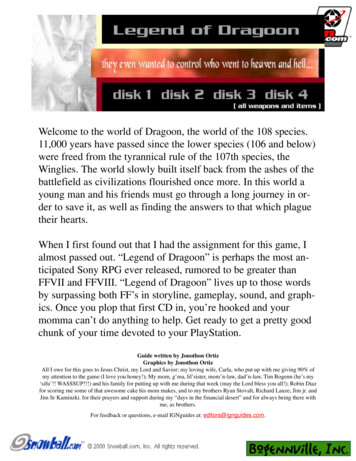

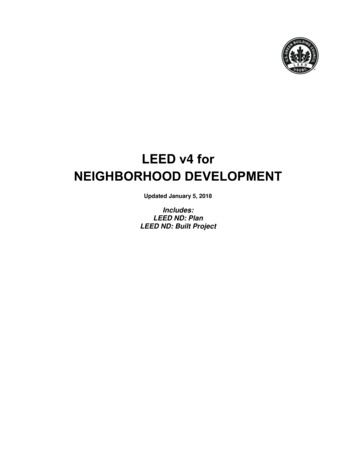
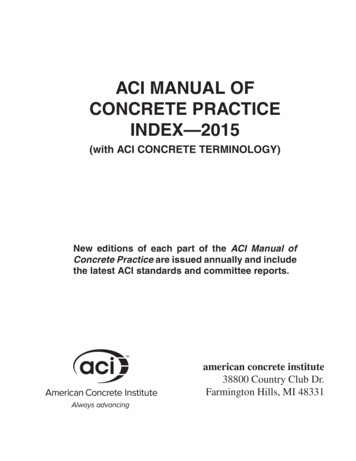


![INDEX [gwall.vn]](/img/4/catalog-thiet-bi-kiem-soat-dinh-duogn-thuyc-anh.jpg)

